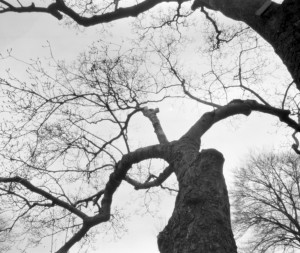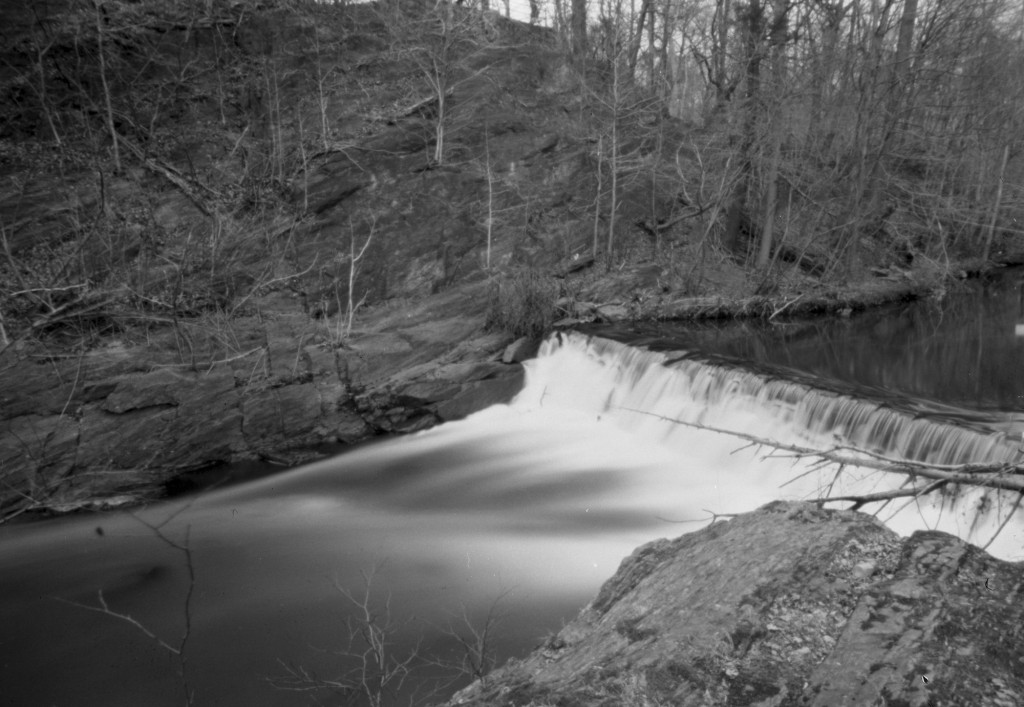Eye of the Needle
Posted in Around the Garden, People, Photography on March 7 2012, by Matt Newman
 The blog staff first happened upon Joel Kroin crouched at the entrance to the Peggy Rockefeller Rose Garden, a coffee pot in hand, cutting a peculiar figure as he went about his work so intently. Not only an NYBG Member but a horticulturist and artist, Joel’s interests carry him often between the greenhouse and the studio. He recently reconnected with us to share some of his latest photography.
The blog staff first happened upon Joel Kroin crouched at the entrance to the Peggy Rockefeller Rose Garden, a coffee pot in hand, cutting a peculiar figure as he went about his work so intently. Not only an NYBG Member but a horticulturist and artist, Joel’s interests carry him often between the greenhouse and the studio. He recently reconnected with us to share some of his latest photography.
His coffee pot (actually a makeshift pinhole camera) has since been replaced with a purpose-built wooden model, one that resembles an old-fashioned camera well enough to avoid any suspicion. “Certainly, the Garden staff have been less curious about what I am doing!” Joel says.
The concept of the pinhole camera is simple–intelligence organizations often relied on the design in the past for its inconspicuous presence in clandestine surveillance operations. A minuscule hole (the diameter of the smallest sewing needle) drilled in a light-proof container serves as the aperture, though it has no lens. When passing through the pinhole, the light inverts horizontally and vertically, projecting a perfect scale image along the back of the container. The idea is essentially camera obscura, a method school children still use today to view the eclipse of the sun without looking directly at it; the introduction of film and a hand-operated, light-proof flap for a shutter completes the package.

“Presently I use black and white film,” Kroin explains. “I process negatives in the same way as one would if they were paper prints. Since the pinhole size is small and I use a ‘slow’ film, my exposure times are from 55 seconds to a few minutes, therefore a tripod or support is essential to hold the camera. Moving objects disappear. Clouds in motion often show up in beautiful scales of gray. Water in motion has a wistful look.”
The quirks of focusing and shooting with the pinhole camera have their pros and cons, of course.
“I find leafless tree branches against a sky show up in fine detail,” he continues. “Lakes and ponds show reflections of trees and land against a smooth, gray water tone. Ice on water is more defined. Close-ups are difficult to photograph when the object is a plant subject to the wind. However, since the pinhole size (F-stop) is very small, there is an infinite range of in-focus from near to far. The focus range offers an opportunity to have distant bridges as well as closer plants and landscapes show up in equally sharp relief.”
The pinhole method produces photographs with the charming, idiosyncratic flaws of something you might find in the NYBG historical archives.
[Not a valid template]To see some of the earlier photographs Joel was kind enough to pass along, as well as his beautiful engravings of natural landscapes, be sure to check last year’s Plant Talk updates. I’m anxiously awaiting his next batch of old-fashioned brilliance.

